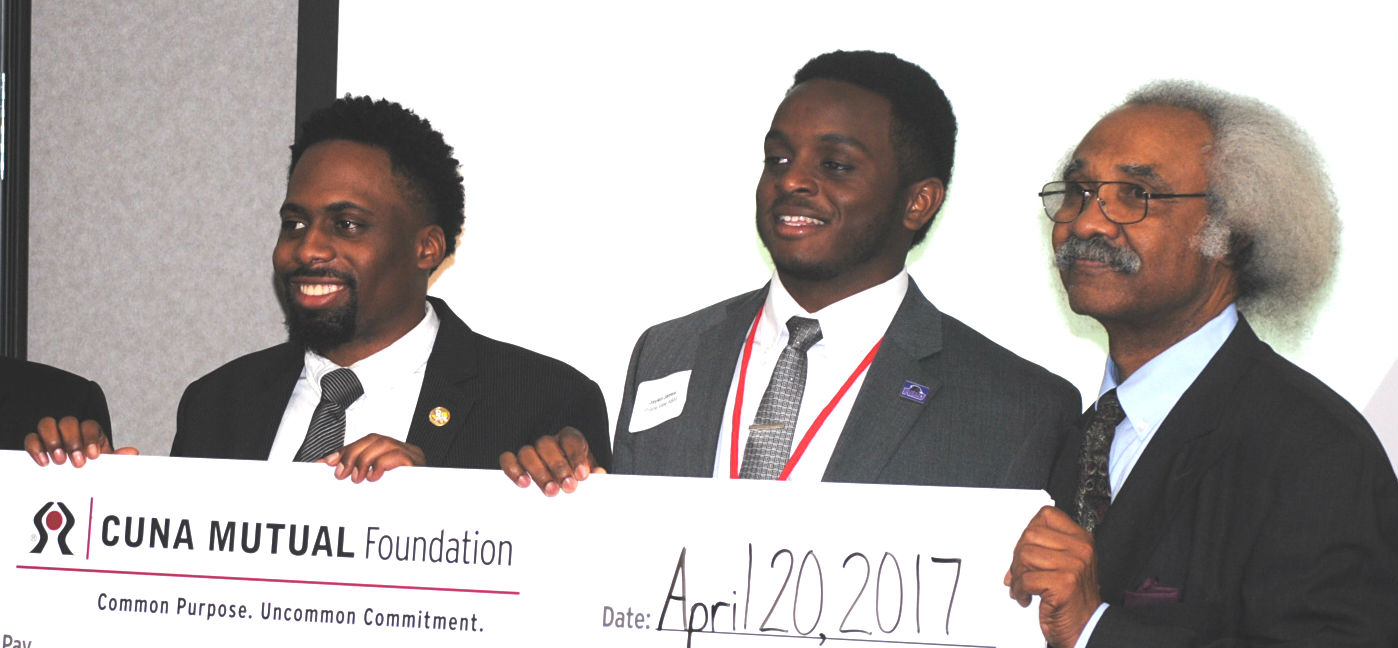
On Thursday morning seven students from historically black colleges and universities as well as Edgewood and UW-Whitewater gathered to give Shark-Tank-style pitches for the best solution for financial institutions to engage people who do not normally use banking services — the so-called “unbanked” and “underbanked.”
The second National FOCUSS Idea competition was a partnership between CUNA Mutual Group, historically Black colleges and universities and FOCUSS (Framework for Opportunity Convergence and the Utilization of Sustainable Solutions), started by 100 Black Men of Madison president Dr. Floyd Rose.
Students delivered 10-minute presentations on how mainstream financial services could be made more accessible, particularly to millennials and people of color that are considered “un-banked”, or using no mainstream financial institution and “underbanked”, or not having access to adequate financial services.
“You think of people who use alternative financial services like payday loans, check cashing places and title loans, how do you get those folks into mainstream financial services,” said Angela Russell, the Manager for Diversity and Inclusion for CUNA Mutual.
The competition started at the local level with teams of one or more competing to win a spot in the national competition as well as a $1,000 cash prize. Six teams came to compete in Madison for cash prizes ranging from $250 for sixth place to $5,000 for first.
Students had a range of ideas from mobile banks, or “banks on wheels”, to money and credit managing apps linked to social media accounts.

“The prompt was really tangible, it was something I see in my community, so it was a great opportunity to come up with something to fix the problem,” said Kiana Washington, who tied for second place. Washington is a senior finance major at North Carolina A&T.
All of the presentations recognized barriers to mainstream banking that hinder communities of color and young people.
“There are barriers to be a part of these institutions that we may not have qualifications for, like a credit score or employment history,” said Kehlin Swain, who, along with his partner Jaylen James, won first place. Both are engineering majors at Prairie View A&M University in Texas.
James and Swain’s winning idea, called PV Solutions, targeted 18-24-year-olds using an originally designed program to link with user social media accounts and create an alternative credit score. The score compiled and analyzed social media postings to help credit unions better understand the needs of their market.
“Credit unions are about people, for people not just numbers,” said Swain.
The team’s plan also incorporated the use of Snapchat geo fences and filters and pop-up schools at local universities to educate users on the benefits of credit unions and where they were located.
The competition is only one component of the partnership. According to Russell, CUNA Mutual builds relationships on historically Black campuses to create a pipeline for more employees of color.
“The competition is about focusing in on students of color and providing them with the opportunity to both learn about CUNA Mutual as a potential employer and to provide a solution to a real world problem,” said Russell.
CUNA Mutual sends ambassadors to campuses, generally employees of their African American resource group, to assist with local completions and build connections with students.
“For students coming from HBCUs this may be the whitest audience they’ve ever presented to, so making sure there’s a comfort with the campus ambassador ahead of time really is meaningful and can go a long way,” said Russell.
Five students of color who participated in last year’s competition went on to do summer internships with the company and 50 percent of this summer’s interns are expected to be of color, according to Russell.
“The intention of this program is to create awareness at campuses of CUNA Mutual as a potential employer and this folds into our overall diversity and inclusion strategy for the company,” said Russell. “This is a way CUNA mutual is continuing our partnership with our community because we know we can’t begin to make CUNA Mutual a diverse and inclusive workforce without intentional connections with the community.”



